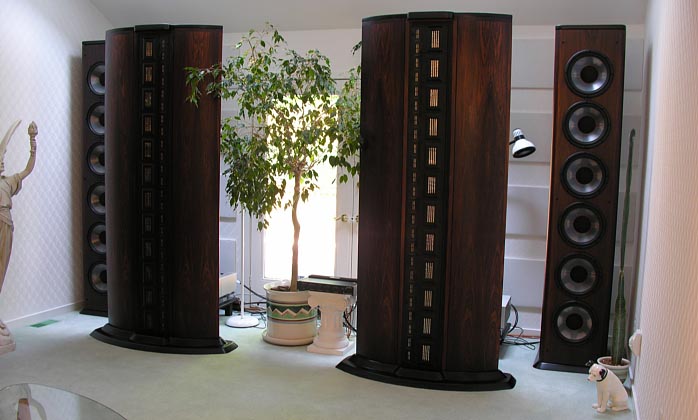Planars, ribbons, and electrostats
by Paul McGowan
Loudspeaker technology can be confusing as soon as we move away from traditional cones, magnets, and voice coils. Planars, ribbons, and electrostatic panel speakers seem so exotic compared to paper-pulp cones.
Today, let's take a look at what a planar speaker is. Tomorrow I want to tell you about an exciting new podcast interview you should listen to called, Mark Levinson, Wadia, and Cello. Then, on Sunday, we'll pick up the conversation with a focus on ribbon technology, and Monday, we'll hit the highlights of electrostats.
Planars, ribbons, and electrostats have something in common: they aren't built into boxes. These three technologies are typically contained in flat panels with sound coming out of both the front and the back. They're often augmented with boxed woofers—attached or separate—and have a lot of surface area from which sound emanates.
Though all three appear to be similar the means by which they operate are different.
In a planar design, there are two main components: a metal-laced diaphragm and an array of magnets. The moving diaphragm element is typically a thin and light polymer like Mylar or Kapton with a circuit of copper glued to its surface. This moving element is surrounded on both sides by strong magnets, typically in wide-spaced bars allowing the sound to escape. The thin diaphragm is suspended in the magnetic fields created by the magnetic arrays. When an audio signal is applied to the diaphragm's printed circuit, a magnetic field is generated which moves the diaphragm away from and towards the magnets, pressurizing the air, generating music.
The most popular planar I am aware of is Magneplanars, a wonderful loudspeaker out of Minnesota. My IRSV speakers in Music Room One are planar magnetics, and if you look closely at the drivers you can see the bars of strong neodymium magnets on the front and back of the device.
Tomorrow I'll tell you of an exciting new podcast in our interview series. If you've ever wanted to hear great stories about the beginnings of the Mark Levinson company, Cello, and Wadia, it'll be well worth the listen. Be sure and go to your mobile devices podcast app and subscribe to Ohms Law. The interview will be waiting for you Saturday morning if you do.
- Choosing a selection results in a full page refresh.
- Opens in a new window.








